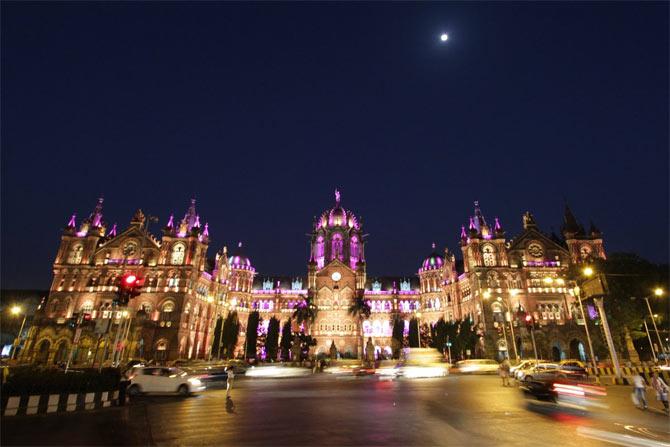Senior officials must leave their cosy offices and be on the field to take stock, and coordinate better with other agencies, to fix this broken system

 Whenever I get down from a Harbour line train at CSTM's platform 1 and walk past the RPF station to subway exit, I find railway employees climbing up a steep steel ladder to reach their office above. The ground there is wet all the time because of spillage from a drinking water kiosk. The scary ladder is the only access to the office and poses a great risk to staffers, including women.
Whenever I get down from a Harbour line train at CSTM's platform 1 and walk past the RPF station to subway exit, I find railway employees climbing up a steep steel ladder to reach their office above. The ground there is wet all the time because of spillage from a drinking water kiosk. The scary ladder is the only access to the office and poses a great risk to staffers, including women.

Representation pic
ADVERTISEMENT
What I have described above may appear inconsequential to the officers running a vast network like Indian Railways, but it represents the lack of sensitivity that planners and engineers have consistently shown in ignoring the safety of their own colleagues. And that makes me think: should we then be expecting them to think of the safety of 80 lakh suburban commuters?
Apathy, shortsightedness, substandard quality of work and unprofessionalism have become hallmarks of our railways. Mumbai suffers the most because of its burgeoning number of commuters, who are taken for granted. Forget luxury, even basic facilities have rarely matched commuters' expectations.
In the Elphinstone Road tragedy, officials have found an excuse in alleged rumours of bridge collapse, which, they say, led to the fatal stampede. But they can't escape the charge that the administration has repeatedly failed Mumbai's suburban network, be it macro or micro planning - ministers approve financial provisions, officials sit on proposals, delaying execution of projects. This actually happened with Elphinstone Road station, says former railway minister Suresh Prabhu.
The city had high expectations from Prabhu, because a local leader had been made the railway minister after three decades. He was committed to the job but couldn't do much for Mumbai in three years. Luck shone on the city once again when Piyush Goyal, also a Mumbaikar, replaced Prabhu. As Goyal was about to announce some new services in Mumbai on Friday, the stampede occurred.
Goyal held an immediate conclave of the railway board in Mumbai and announced a series of measures to provide better safety and facilities. He directed that 200 officials from elsewhere be brought here to supervise projects on the suburban network.
Ground reality
Railways performs freely under its jurisdiction. However, this freedom does not necessarily lead to quality work. Instead, we get narrow entry and exit points, insufficient FOBs, filthy toilets, unhygienic food stalls and slippery platforms.
Officials say difficulties posed by overcrowding and insufficient time blocks do not allow seamless construction activity. Fair enough; but what about things that can be regulated by supervision and enactment of rules?
The question here is do senior officials, say the general managers of CR and WR, and their immediate juniors leave their cosy offices to see a sad state of affairs on tracks and trains and inside stations? What we hear is that the GMs are more concerned about their own career prospects rather than making some difference to the network they lord over.
Who's up for the job?
Who should we look up to then? People in railways say their new board chairman, Ashwani Lohani, who was made Air India chief despite being a railway service officer, should be useful to Mumbai if Goyal so wishes. Lohani has transformed many institutions of the Madhya Pradesh government. He has worked in various capacities with the railways before making it to the top.
If Lohani is as serious as he was in Saturday's meeting, where he lashed out at officers for wasting their time in receiving him on his arrival from Delhi, the chairman should first know that he would have to deal with multiple forces in the MMR, except for Navi Mumbai, where CIDCO has done praiseworthy work. While railways administration is primarily responsible for not considering growing footfalls at its stations in MMR, civic and state authorities too should be blamed for bad planning and adding to commuters' woes.
Mill land has given way to office spaces in Central Mumbai, where footfall has increased manifold. Curry Road, Lower Parel, Parel, Elphinstone Road, Dadar, Kurla, Thane, Andheri, Ghatkopar, Dombivli and Kalyan face problems because of lack of coordination between railways and state/civic agencies. Getting rid of hawkers should be a top priority at every station.
One more thing that we need is commuters who self-impose discipline and heed to caution they hear from within, because every life is precious. They may stock up that uncontrolled anger to be hurled at railway officials, planners and politicians who have failed them repeatedly.
Dharmendra Jore is political editor, mid-day. He tweets @dharmendrajore. Send your feedback to mailbag@mid-day.com
 Subscribe today by clicking the link and stay updated with the latest news!" Click here!
Subscribe today by clicking the link and stay updated with the latest news!" Click here!







